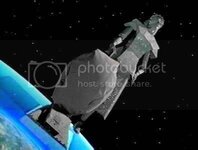enkeivette
Well-known member
- Joined
- Mar 30, 2008
- Messages
- 990
- Reaction score
- 0
Got the last piece of the puzzle for my powerplant, a Holley Ultra HP fuel pump... after this I can work on guiding my missle. 
So, this pump is serious business, rated at 200 gph. And it's setup for a 5/8" inlet. :twitch: I'm not going to go that crazy, but I was thinking about rerouting the return line to work in tandem with the supply line... since this pump doesn't require a return line. The supply line in conjunction with the return line would be the equivalent of about a 1/2" line, which should be fine.
So, what do I have to do at the tank to setup the return line for suck??? Other than using the Shwartz...
Suck suck suck!!!

So, this pump is serious business, rated at 200 gph. And it's setup for a 5/8" inlet. :twitch: I'm not going to go that crazy, but I was thinking about rerouting the return line to work in tandem with the supply line... since this pump doesn't require a return line. The supply line in conjunction with the return line would be the equivalent of about a 1/2" line, which should be fine.
So, what do I have to do at the tank to setup the return line for suck??? Other than using the Shwartz...
Suck suck suck!!!

Last edited:
